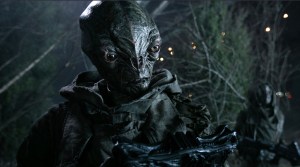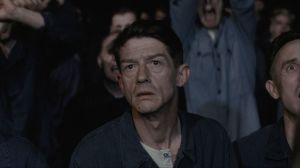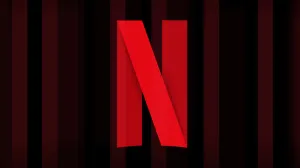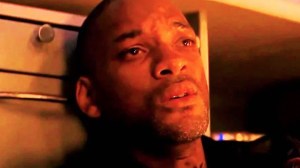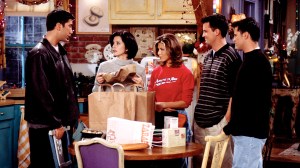Filmmaker Franck Khalfoun is no stranger to delivering audiences stories that are contained in constricted scenarios. While a film like P2 largely focused on specific levels of a parking structure, his interpretation of Maniac saw a majorirt of the film restricted to the point of view of the film’s killer. His latest film, Night of the Hunted, could be his most restricted setting yet. A reimagining of the Spanish film Night of the Rat, the film is almost entirely contained to one gas station, which amplifies the tension but also presents some production challenges. Night of the Hunted lands on Shudder on October 20th.
Videos by ComicBook.com
Night of the Hunted is described, “When an unsuspecting woman (Camilla Rowe) stops at a remote gas station in the dead of night, she’s made the plaything of a sociopathic sniper with a secret vendetta. To survive she must not only dodge his bullets and fight for her life, but also figure out who wants her dead and why…”
ComicBook.com caught up with Khalfoun to talk developing the film, the challenges of the production, and more.
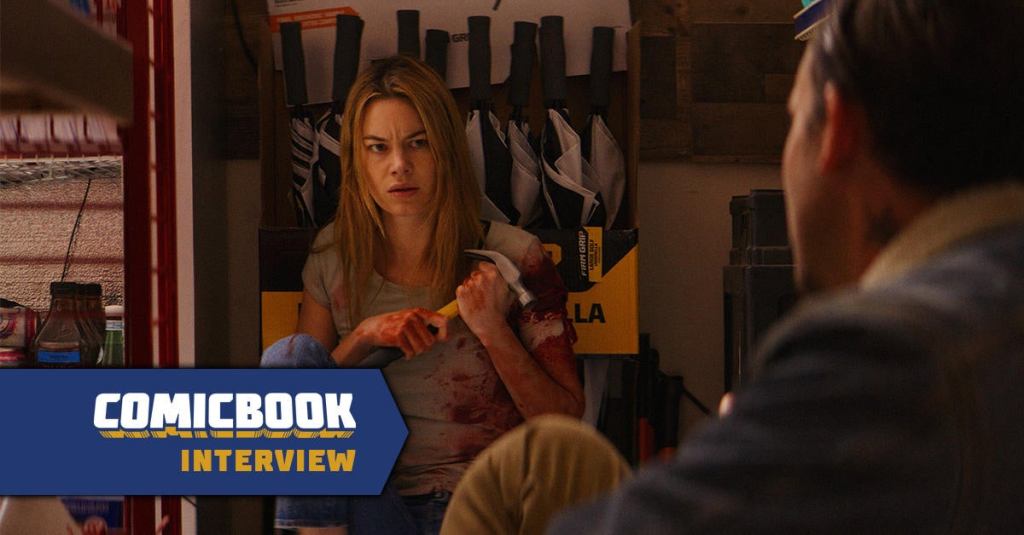
ComicBook.com: First thing that I was curious, and this might be a super short yes-or-no answer, but just the title alone, Night of the Hunted, obviously a flip on the famous Robert Mitchum movie The Night of the Hunter. Was that at all an intentional, thematic mirroring or was it just a good name for a movie?
Franck Khalfoun: I didn’t come up with the name of the movie, and it never bothered anybody. It was like, “Yeah, it’s the Night of the Hunted.” After having made the movie, I’m like, “It’s a little bit more … It’s a little more cerebral, I think, of a film.” There’s a lot of things going on in there that are intellectualized or that there’s a real debate and real arguments. I felt, later on, that perhaps there was a name, maybe, that was a little more representative of that. But it was there, and it never bothered anybody, and we fell in love, I guess we fell in love, we just never changed, but it was presented to us, I guess.
The original film, the Spanish film that this is based on, because it’s really the concept of being pinned down by a sniper in a gas station, was Night of the Rat, the Spanish film, which had no dialogue. I don’t know if you saw that one, but that one was zero dialogue, right? And so the Night of the Rat, I don’t know if it translated really well, especially with Camilla being so gorgeous, but at the same time, she’s not a great person either. We’re not sure where she comes from.
So no, I don’t know. The title, it was just there, and we never bothered to take it off. Now I’m looking at the Night of the Hunted, the French film, too, and there’s a lot of things about that, and so I’m not sure people will look for Night of the Hunted and see that one and go, “Well, this is weird.” But no, I think it’s fine. Neither a yes or no, actually. Neither yes or no.
What was it about the idea, in general, that really excited you? Was it your connection to the source material? Was it the constrictions of the contained setting? Was it the political and cultural themes that it was exploring?
Well, I’ll have to tell you, it was a simple concept, which I’m always down for. And then the writer who adapted and made it an American film, or film with dialogue, Glen Freyer, wrote about a psychopath who was chasing this woman down. There was one line in particular, which I really loved, which was he said that, “The future generations will inherit my ability to not give a f-ck.” I thought that was really profound and really scary and that’s the one sentence, to me, which says, “Oh wow, there’s something really interesting about this notion that we are losing our ability to have empathy, which explains why we have so many killings and why the world is blowing up now as it is.”
But that was really one of the only things in there, and I took that script and all these things that you’re talking about, all of the current event things, all the political or socioeconomic things that she deals with or that they talk about, it’s what I brought to the film. I started layering it with — trying to layer it with concepts or ideas that we’re all grappling with today and tried to introduce it into the film and having discussions about American society, because of the guns, but also the world as a whole. So I saw the potential in the film of making a social commentary about the condition of the world today, of humanity.
That’s what appealed to me, to the film, that and the challenge of making a film in one location and making it suspenseful. That’s really difficult. I thought it needed another layer because … The balance was scares, fears, escape, physical, and then an emotional grappling and cat and mouse. It’s both a physical cat-and-mouse and an emotional cat-and-mouse, so that’s what appealed to me. Could I elevate the genre in a way to talk about things that we’re all dealing with so that it’s entertaining on multiple levels?
I was really intrigued by just the concept of designing the convenience store itself. Obviously there are certain moments in the script where you have to have Camilla in certain places and discover certain things, but when it came to actually designing the set, designing the location, were there discoveries of, “Oh, and if we put this bag of chips here, we can have this integration here,”? How specific was the design of the actual set?
The set, we found an old gas station, which was a garage, which had been turned into a diner with the pumps. I came in, I said, “Oh, let’s get rid of everything,” because I could control the space, and I can make it whatever I want. So I designed where everything was in the store based off of what we’re all used to seeing when we go to gas stations somewhere in the middle of the country or wherever. I did a floor plan and designed the action around the floor plan.
At the same time, we discovered things to do once that was established. You can’t pick everything and know how … You’re going to run into problems, certainly, with every design. “Oh, where did this go?” So I had general idea of where she was going to hide, the billboard across the way, and what the angles were going to be. Then you discover certain things. At one point, they throw batteries against the broom to get the broom so she can get the broom, and she can grab the walkie. Those things were done right there. They’re like, “Oh, my God, how do we get out of this situation? We’re stuck. How do we get out and not get shot?” And so I came up with that right there and then.
Then the batteries, those were written. That was a moment that was written in the script, and so that part was written. Then the umbrellas, “Oh, we know we were going to do umbrellas. Where are they going to be?” So everything had to be composed and fit like a puzzle. “This action’s going to happen here. This action’s going to happen here.” And, at the same time, hopefully, we’re going to be able to have the right angles that we want. That was the physical, the narrative puzzle that we had to figure out on that one. It’s exciting. It has one location. It’s pretty hard to just maintain the attention and thrills and suspense in one place, but I think everybody did a great job.
Your work on P2, that is similar, a relatively limited location that you’re working with, but with a parking garage, you can shoot it from a bunch of different angles and make it seem smaller or bigger. With this one convenience store, what did you find to be the biggest challenge of such a restricted setting?
Well, when I got there, I go, “Wow, my next movie’s going to be in a closet because you keep getting smaller and smaller.” It’s the constraints of where to put the camera in a space like that and what angles, how many … If you look at the movie, there isn’t a single angle that repeats itself. It’s always a different shot, and you have to maintain the audience’s interest. If I kept everything from two angles, it’d be boring, right?
So, how do you take each scene? I basically broke down the script and made sure that it evolved with each scene, and that each scene was in itself its own little section, its own little chapter, its own little design, and that each little section, each little chapter of our little story was filmed in a different way. I was pretty sure that if I stayed true to it and made sure that I didn’t repeat myself, that we’d be able to maintain suspense and the audience’s attention. You mix that with the dialogue, which shifts and changes, and you balance your action with your dialogue, and I think it works. I think it works. I was pleased with it. I’m proud of the film.
You brought up Camilla, what was it about her that really let you know that she would be the right person that could handle the physical and emotional requirements of this movie? And also, what did she bring that you didn’t expect until you got to set, and she transformed that character?
Well, she’s compelling, all the movies I’ve seen her … Somebody mentioned her, and it was very compelling. I was like, “Well, she’s small and she is frail,” and so I was able to convince myself that, well, that’s what you want. You want somebody frail to then become heroic and to step outside of herself and so that the arc is really well-defined.
Emotionally, she’s very intuitive. She’s very smart. She had emotion. I mean, you could see it, that she’s able to convey it, and she takes her time. I saw some movies, one of her earlier films where she plays a young prostitute who deals with having a child, and I saw the emotion in her. I saw that really, she really could bring that.
Physically, I was less certain, and she really suffered, and it shows. I mean, I felt something. There’s a moment where she gets shot, one of the moments where she gets shot, where she’s in pain and she’s screaming and she’s crawling on the floor and it’s very hard to — it’s physical. Now, she’s a little model, European model, and so this is really outside of her wheelhouse, but, man, she really took it and made it her own. I think you combine that, you combine that struggling with her emotional range, and I thought, “Wow, she’s really going to be able to do this.”
Then when I started talking with her, the surprise, the thing that I didn’t expect, which is the last part of your question, was she brought dialogue and she was intellectually involved. She understood where I was going with all the concepts, the ideas, and the subject matter, and she brought things to the table. She wrote things. She improvised, and she took the script and the character to the next level.
There was a moment when she’s talking about abortions, and she’s talking about having the right, and she goes, “And it’s my choice.” We shot that the night that the Supreme Court had reversed Roe v. Wade, and she came in crying. She was emotionally invested in what was going on in the world and she understood the power of the words that we were trying to convey. She inhabited them, and she made them her own.
She’s powerful. When she comes out of the gas station and confronts him finally, and he doesn’t shoot, and she’s out there, and she goes, “It’s my choice. And it’s the choice your mother would’ve made had she known what you’d become,” it’s so intensely powerful. A big part of that was the dialogue worked with her. That was the big surprise and the pleasant surprise. She’s very, very intelligent and really has great range emotionally, and I was very, very happy to have her do the movie.
One more thing I have got to get in, is I’m a really big fan and big supporter of your Maniac. That, honestly, it is one of my favorite horror reboots, the way that you explored new perspectives on such a beloved, disgusting story.
That was a big challenge because I knew that there was going to be some serious backlash.
I fully support what you did and what you accomplished with that movie, and Elijah [Wood]’s so great. Do you think that scratched your itch of doing a reboot or doing a remake, or do you think there is another movie out there that you would really love to similarly put a new perspective on and reimagine in a way that horror fans might not be expecting?
It’s so funny because you don’t want to remake the movies you love. You have to find movies you don’t love that have good ideas, and usually you don’t go out searching for those. So it’s strange. No, I don’t know that I do, that I have one in particular that I’d like to remake. I must have thought of a few. Somebody came to me a couple days ago, and [said], “Dead Calm. Let’s redo Dead Calm.” I go, “It’s perfect. Why do you want to redo perfect movies and the thriller vibe?” But I think everything gets redone, rewritten all the time. I’m not against that.
What I want to do, and what I tried to do with Maniac, is expose a new generation to ideas that we’ve all loved, and pay homage. I loved the movie, I loved the original Maniac, and I didn’t want to remake that movie. I wanted to make another movie that captivated the seediness of it and the heart of it without remaking it. I really struggled and I really fought with the original script. It wasn’t a perspective film of Maniac, a point of view. I said, “What are we going to do? Are we going to redo another serial-killer movie? Let’s do something that’s completely out of the box and completely different.” I think, for that, the fans of the genre and of that movie will be forgiving.
I think it worked. I think it worked because everybody’s going, “Elijah Wood?” and I’m like, “No, but there’s the creepy guy next door, which is very, very connective.” I always kept thinking when I was doing that movie, like every serial killer that gets caught? All the neighbors are always going, “He seemed like such a normal guy. He seemed like such a nice guy.” That’s terrifying to me. That’s the real boogeyman.
If you were walking down the street in the ’80s, and you saw [original Maniac star] Joe Spinell walking towards you, you probably would across the street. Whereas Elijah, you might be a little less defensive.
Well, if Joe Spinell came up to you, you’d be defensive, and if Ted Bundy came up to you, you’d probably go on a date with him. So that’s really terrifying. That’s always stuck with me, because I meet a guy … I’m a child of the ’80s when all those things were happening. Maniac was a little bit early for me, but I did get those serial killers that were the normal people, the normal people that we never would expected, and that always stuck with me in terms of the people I put in movies, the characters.
Night of the Hunted hits Shudder on October 20th.
This interview has been edited for length and clarity. You can contact Patrick Cavanaugh directly on Twitter.

